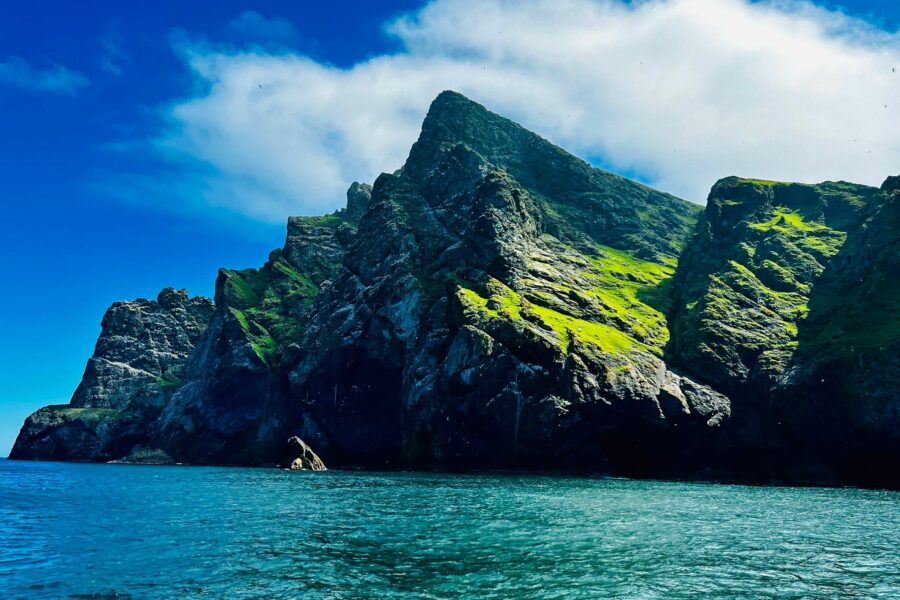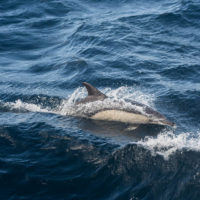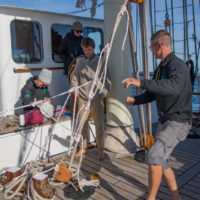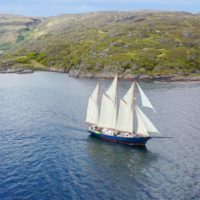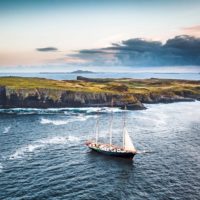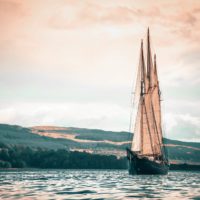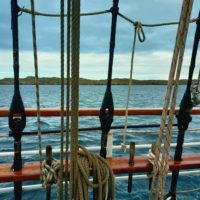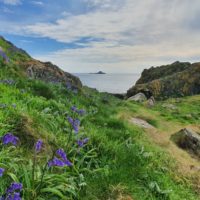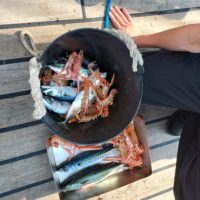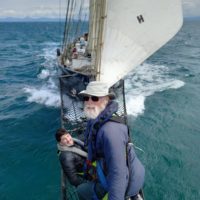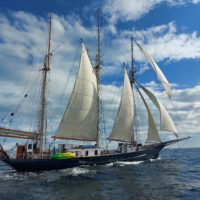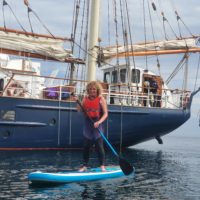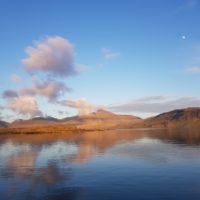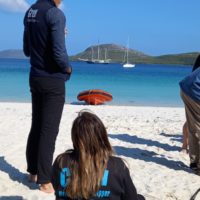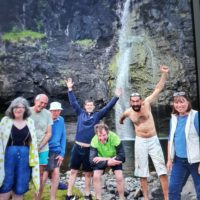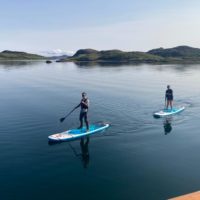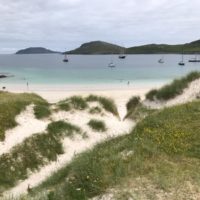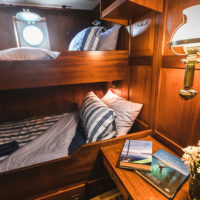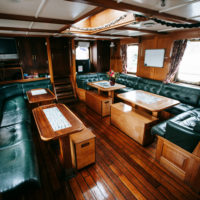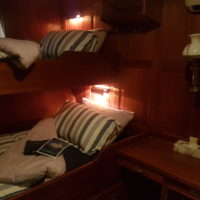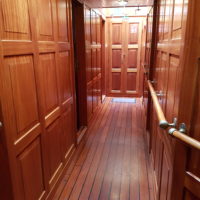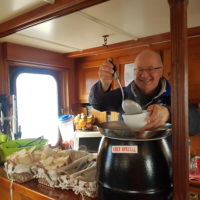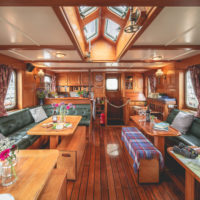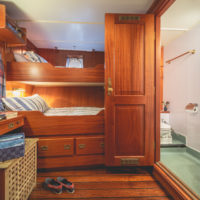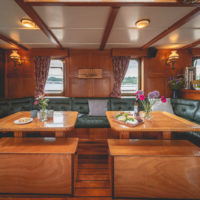VATERSAY AND BARRA
Sitting at the southern end of the Island chain of the Outer Hebrides, Barra and Vatersay offer an exciting mix of contrasting island experiences with something on offer for every. Feel the strong sense of community created by crofters and seafarers who live side by side on these isolated islands.
Understand the importance of past on present with visits to sites such as the iconic Kisimul Castle at Castlebay on Barra or the deserted village of Eoradail on Vatersay and listen to the lessons that history has taught these Outer Hebridean islands, allowing them to adapt their existence and survive across the centuries.
View the Barra seals at Seal Bay for a stunning snapshot of the islands natural heritage or stroll amongst the wildflowers on the Vatersay machair to truly understand the allure of Outer Hebridean isolation.
ISLES OF SOUTH UIST AND ERISKAY
Experience some of the best that the islands’ outdoors has to offer at Loch Druidibeg on the West Side of South Uist. Here fans of horticulture can explore the abundance of plant life, while ornithologists can find ample opportunities for birdwatching, with chances to spot species such as redshank, dunlin, lapwing and greylag geese.
Explore the heights of the Hebrides on South Uists East Side, where hillwalking opportunities include the peaks of Hecla, Beinn Mhor, Beinn Corradale and Ben Kenneth, with gentler trails available at ground level for those wishing to explore without the exertion!
Follow in the footsteps of South Uist’s first settlers with a trip to the island’s South End, where Hebridean hospitality awaits on the shores that welcomed early incomers to the area, or cross to the connected Isle of Eriskay to learn more about these island people’s audacious endeavours.
ISLES OF NORTH UIST, BERNERAY AND GRIMSAY
Immerse yourself in this area’s inspirational offerings as you tour the East Side of North Uist, where art and environment come together in a uniquely Hebridean harmony and attractions such as the Hut of the Shadows installation or Taigh Chearsabhagh Arts Centre provide the perfect starting point for your journey of discovery, or head for the island’s West Side to discover the wonders of the wild at the Balranald RSPB reserve and the many beautiful Atlantic beaches.
Gaze out across the endless blue ocean to the abandoned islands of St Kilda and feel the pride in these islands’ past which is carried forward by those who remain here in the present; marvel at the achievements of these close communities in the face of adversity with landmarks such as Scolpaig Tower and the Committee Road standing as testament to their tenacity.
ISLE OF HARRIS
The outer Hebridean island of Harris is one that has offered inspiration for generations. With its rich traditions, stunning shifting scenery and strong sense of community. Harris offers a unique introduction to island life on the edge. Visit the village of Tarbert, home to the Harris Tweed Shop and the recently opened Isle of Harris Distillery.
Gaze out across the West Harris sands to the famous uninhabited Castaway island of Taransay and experience a glimpse of the isolation from which the proud self-sufficent communities of the Outer Hebrides were born, or tour the adjoining Isle of Scalpay with its strong seafaring connections to understand more about the symbiosis of islanders and ocean.
ISLE OF LEWIS
The largest of the Outer Hebrides, Lewis offers amazing opportunities to explore all the elements life on the edge in the Atlantic Ocean – with history, heritage, wilderness, wildlife, arts and crafts.
See the ancient Callanish Standing Stones rising from the Lewis landscape to give an imposing outline against the endless island skies and hear the echoes of the past murmuring round these monoliths – an eternal testament to islanders enduring spirit and ingenuity.
Explore the sea caves and stacks at Garry Beach to better understand how the relentless seas have shaped the island environment and the lifestyles of those who live here.
ST KILDA
With a suitable weather window, we aim to visit the Island archipelago of St Kilda, lying 41 miles off the west coast of Benbecula. St Kilda is an extreme Atlantic outpost, and one of the few World Heritage sites in existence awarded ‘dual’ status for meeting both the natural and cultural criteria for the classification.
With its clear waters and craggy sea cliffs (including one that ranks as Europe’s highest) it is not surprising that St Kilda is home to the continent’s largest colony of seabirds including gannets and puffins. The islands also support a number of unique species of sheep, field-mice and wrens, making it a fascinating natural island environment unmatched anywhere on earth.
Originally settled by humans between four and five thousand years ago, St Kilda’s distance from the rest of the Outer Hebrides allowed for the development of a unique style of self-sufficient island life, that remained much preserved until the archipelago’s eventual abandonment in 1930.
Investigation of the history of St Kilda helps us to understand a little more about the evolution of island communities and the challenges they face from both society and the elements.
Now owned by the National Trust and classified as a National Nature Reserve by Scottish National Heritage, St Kilda is managed in partnership with the Ministry of Defence who lease land here for an important radar tracking station.
Island explorers can choose from a selection of walks offering ample opportunities for wildlife watching, while the more intrepid may venture into the island’s crystal clear waters – recognised as one of Europe’s most spectacular dive sites, as well as being home to whales and basking shark, which can sometimes be spotted from the shore.
Tour the old village, where St Kilda’s indigenous Soay sheep wander and graze among the blackhouse ruins of a bygone island age, or visit the museum house on the main village street, where artefacts from that era are exhibited.
Find the faerie house – an underground store that could date from as early as 500BC, or climb to the top of Mullach Mor to gain a greater understanding of the settlements positioning against the Atlantic elements.
After visiting St Kilda in the decades after its abandonment, naturalist James Fisher wrote that the islands would “haunt” those who saw them for “the rest of their lives” – adding that it was “impossible to accurately describe” these awe inspiring islands – meaning you will just have to visit and see this stunning sea-bound spectacle for yourself!
